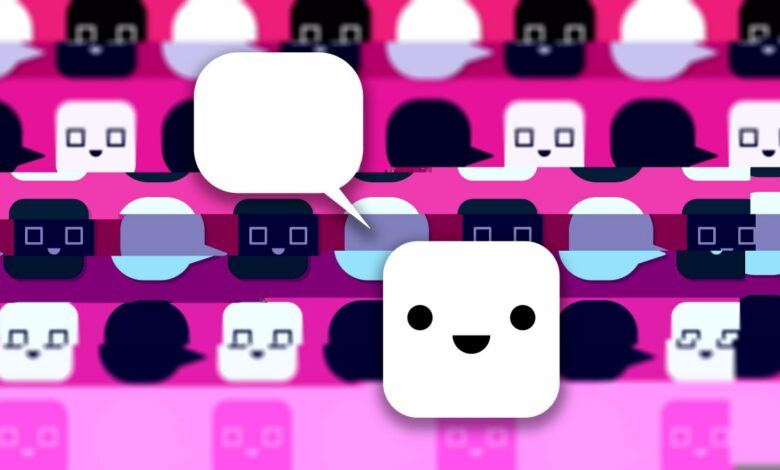Too many models | TechCrunch

How many AI models is too many? It depends on how you look at it, but 10 a week is probably a bit much. That’s roughly how many we’ve seen roll out in the last few days, and it’s increasingly hard to say whether and how these models compare to one another, if it was ever possible to begin with. So what’s the point?
We’re at a weird time in the evolution of AI, though of course it’s been pretty weird the whole time. We’re seeing a proliferation of models large and small, from niche developers to large, well-funded ones.
Let’s just run down the list from this week, shall we? I’ve tried to condense what sets each model apart.
- LLaMa-3: Meta’s latest “open” flagship large language model. (The term “open” is disputed right now, but this project is widely used by the community regardless.)
- Mistral 8×22: A “mixture of experts” model, on the large side, from a French outfit that has shied away from the openness they once embraced.
- Stable Diffusion 3 Turbo: An upgraded SD3 to go with the open-ish Stability’s new API. Borrowing “turbo” from OpenAI’s model nomenclature is a little weird, but OK.
- Adobe Acrobat AI Assistant: “Talk to your documents” from the 800-lb document gorilla. Pretty sure this is mostly a wrapper for ChatGPT, though.
- Reka Core: From a small team formerly employed by Big AI, a multimodal model baked from scratch that is at least nominally competitive with the big dogs.
- Idefics2: A more open multimodal model, built on top of recent, smaller Mistral and Google models.
- OLMo-1.7-7B: A larger version of AI2’s LLM, among the most open out there, and a stepping stone to a future 70B-scale model.
- Pile-T5: A version of the ol’ reliable T5 model fine-tuned on code database the Pile. The same T5 you know and love but better coding.
- Cohere Compass: An “embedding model” (if you don’t know already, don’t worry about it) focused on incorporating multiple data types to cover more use cases.
- Imagine Flash: Meta’s newest image generation model, relying on a new distillation method to accelerate diffusion without overly compromising quality.
- Limitless: “A personalized AI powered by what you’ve seen, said, or heard. It’s a web app, Mac app, Windows app, and a wearable.” 😬
That’s 11, because one was announced while I was writing this. And this is not all of the models released or previewed this week! It’s just the ones we saw and discussed. If we were to relax the conditions for inclusion a bit, there would dozens: some fine-tuned existing models, some combos like Idefics 2, some experimental or niche, and so on. Not to mention this week’s new tools for building (torchtune) and battling against (Glaze 2.0) generative AI!
What are we to make of this never-ending avalanche? We can’t “review” them all. So how can we help you, our readers, understand and keep up with all these things?
The truth is you don’t need to keep up. Some models like ChatGPT and Gemini have evolved into entire web platforms, spanning multiple use cases and access points. Other large language models like LLaMa or OLMo — though they technically share a basic architecture — don’t actually fill the same role. They are intended to live in the background as a service or component, not in the foreground as a name brand.
There’s some deliberate confusion about these two things, because the models’ developers want to borrow a little of the fanfare associated with major AI platform releases, like your GPT-4V or Gemini Ultra. Everyone wants you to think that their release is an important one. And while it’s probably important to somebody, that somebody is almost certainly not you.
Think about it in the sense of another broad, diverse category like cars. When they were first invented, you just bought “a car.” Then a little later, you could choose between a big car, a small car, and a tractor. Nowadays, there are hundreds of cars released every year, but you probably don’t need to be aware of even one in ten of them, because nine out of ten are not a car you need or even a car as you understand the term. Similarly, we’re moving from the big/small/tractor era of AI toward the proliferation era, and even AI specialists can’t keep up with and test all the models coming out.
The other side of this story is that we were already in this stage long before ChatGPT and the other big models came out. Far fewer people were reading about this 7 or 8 years ago, but we covered it nevertheless because it was clearly a technology waiting for its breakout moment. There were papers, models, and research constantly coming out, and conferences like SIGGRAPH and NeurIPS were filled with machine learning engineers comparing notes and building on one another’s work. Here’s a visual understanding story I wrote in 2011!
That activity is still underway every day. But because AI has become big business — arguably the biggest in tech right now — these developments have been lent a bit of extra weight, since people are curious whether one of these might be as big a leap over ChatGPT that ChatGPT was over its predecessors.
The simple truth is that none of these models is going to be that kind of big step, since OpenAI’s advance was built on a fundamental change to machine learning architecture that every other company has now adopted, and which has not been superseded. Incremental improvements like a point or two better on a synthetic benchmark, or marginally more convincing language or imagery, is all we have to look forward to for the present.
Does that mean none of these models matter? Certainly they do. You don’t get from version 2.0 to 3.0 without 2.1, 2.2, 2.2.1, and so on. And sometimes those advances are meaningful, address serious shortcomings, or expose unexpected vulnerabilities. We try to cover the interesting ones, but that’s just a fraction of the full number. We’re actually working on a piece now collecting all the models we think the ML-curious should be aware of, and it’s on the order of a dozen.
Don’t worry: when a big one comes along, you’ll know, and not just because TechCrunch is covering it. It’s going to be as obvious to you as it is to us.




